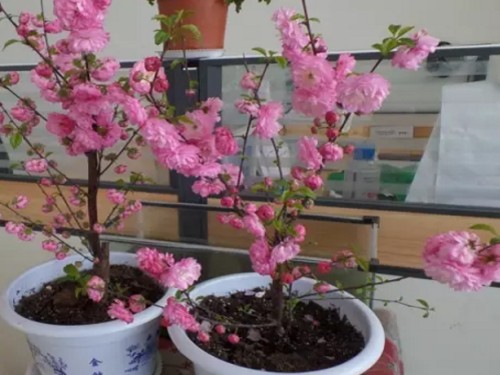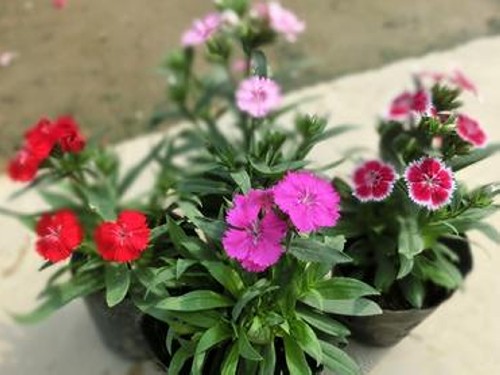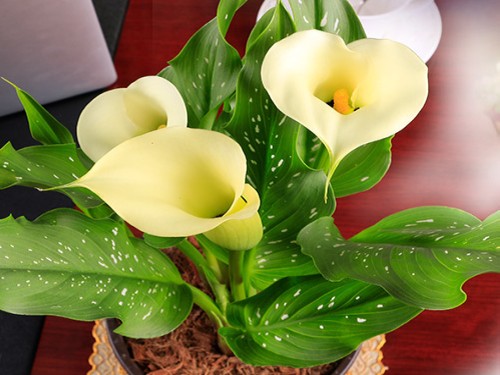Grafting technique of Prunus mandshurica
Prunus mandshurica has been cultivated in China for hundreds of years and has been planted in most parks all over the country. This species blossoms early and is mainly for ornamental use. The common cultivation types are double elm leaf plum (double flower, pink; sepals usually 10), petal branch (10 petals and sepals, 10 pollen red; glabrous under leaf).

As double elm leaf plum is not easy to bear fruit, if sowing and propagation, the source of seeds is a very headache. However, the breeding quantity by using ramet law is too low. After comprehensive comparison, people generally use grafting to propagate double elm leaf plum, and the grafting methods are as follows:
1. Rootstock and scion selection rootstock is suitable for 1-2-year-old peach seedlings with strong growth, and 3-4-year-old plants can also be grafted. Plants with reverse trunk and smooth bark should be selected as rootstocks, and the small lateral branches and useless branches around the roots should be cut off before grafting. One-year-old branches with full growth, full leaf buds and uniform thickness should be selected for scions, and the unplump parts of shoot and base buds should be removed, and 2-3 buds should be retained for each scion.
2. The best time for grafting is before the sap begins to flow before sprouting, and from late March to early April in Yulin area. The splicing or splicing method is adopted.
3. Operation method: both sides of the scion are cut into a slope of 3 cm long with a sharp knife. if the rootstock is thicker than the scion, it can be cut into a partial wedge, and the cutting surface should be smooth and smooth. Cut the rootstock 3-5 cm off the ground, split a 2.5-cm crack under the 2 cross-section of 1 stroke, and quickly insert the scion into the cut of the rootstock, leaving the scion 0-3 cm white, so that the rootstock and ear close together. If the scion is thinner than the rootstock, make sure that one side of the cambium is aligned, and then tie the interface from top to bottom with a plastic strip so as not to move the scion when bandaging.
4. The management after grafting should often erase the sprouts on the rootstock after grafting, otherwise the survival of the scion will be affected due to nutrient consumption. If the scion sprouts and leaves in about 2 months, the binding band can be removed. if it is released too late, it will affect the growth of the scion, it can not be unbound prematurely, prevent spring drought, dryness, wind fracture and damage to the scion, and timely watering, loosening the soil and weeding, to facilitate the scion budding growth. The double elm leaf plum cultured by grafting method has the advantages of fast speed, high survival rate, simple operation, and can blossom in the same year, and the grafted plant grows faster, the plant height, the crown width is larger, the number of petals increases and the flower color deepens than the ungrafted one.
The propagation of Prunus mandshurica can be done by grafting, sowing and striping, but the effect of grafting is the best. It only takes two or three years to grow into a plant, blossom and bear fruit. There are two main grafting methods: cutting and bud grafting. Mountain peach, elm leaf plum seedlings and apricot can be selected as rootstocks. Rootstocks should be cultivated for more than two years, and the base diameter should be 1. About 5 cm, should be truncated in advance before grafting, and 5 to 7 cm stumps should be retained on the surface of the land.
The main results are as follows: 1. From the end of August to the middle of September, the bud position should be fixed on the branch selected in advance as scion. The bud should be stout, fat and free from dry tip and insect pests. Use a sterilized bud grafting knife to cut upward into the xylem at an angle of 30 degrees 2 cm below the bud position, up to 1 cm above the bud position, then cut the grafting bud gently at the top of the bud position (1 cm). Cut a "T" shape on the bark with a knife 3 cm above the surface of the rootstock, with a length × width of 3 cm × 2 cm, gently uncover the bark and insert the buds into the "T" cut. Connect the buds closely with the rootstock, and then cut the plastic belt into a narrow band and tie it up. After grafting, the bud did not wilt in about 7 days, indicating that it has survived, and the plastic belt can be removed in about 20 days.
2. branch grafting in the middle and first ten days of March in spring, take the branches of one-year-old double-petal elm leaf plum as scions, about 8 cm long, need to retain 3 or 4 buds, and cut about 4 cm vertically between xylem and bark with a knife on one side of the cross section of the rootstock. Cut the lower end of the scion into a duck's mouth shape, about 3. 5 cm, then insert the scion vertically into the cut of the rootstock, "expose" slightly, and then wrap it tightly with plastic tape. In order to moisturize, you can immediately cultivate the soil around it. It will survive in about 20 days. After a month, the soil will be gently removed and the plastic belt will be removed.
Time: 2019-05-25 Click:
- Prev

Planting method of potted colorful Carnation Flower
Colorful carnation, alias: Phyllostachys pubescens, American carnation, brocade, perennial herbs, 30-60 cm high, cold-resistant but not resistant to heat, can be planted from late spring to mid-autumn (the temperature is above 10 degrees, regardless of the season). Gardens can be used in flower beds, flower borders, flower beds or potted plants
- Next

Planting methods of colorful calla lilies
As a plant of Zantedeschia family, the appearance of colored calla is elegant and graceful, and it also has rich colors such as red, pink, purple, white and so on. It is loved by many flower lovers and has high ornamental value. It can be used as a basket, decoration, bouquet, or one of the important cut flowers.
Related
- Fuxing push coffee new agricultural production and marketing class: lack of small-scale processing plants
- Jujube rice field leisure farm deep ploughing Yilan for five years to create a space for organic food and play
- Nongyu Farm-A trial of organic papaya for brave women with advanced technology
- Four points for attention in the prevention and control of diseases and insect pests of edible fungi
- How to add nutrient solution to Edible Fungi
- Is there any good way to control edible fungus mites?
- Open Inoculation Technology of Edible Fungi
- Is there any clever way to use fertilizer for edible fungus in winter?
- What agents are used to kill the pathogens of edible fungi in the mushroom shed?
- Rapid drying of Edible Fungi

